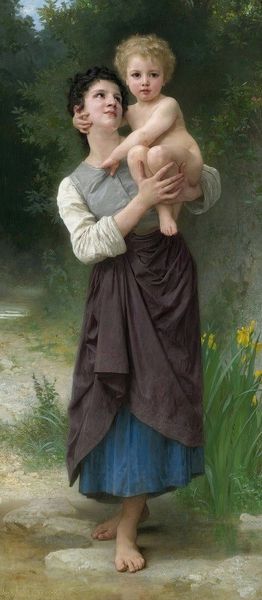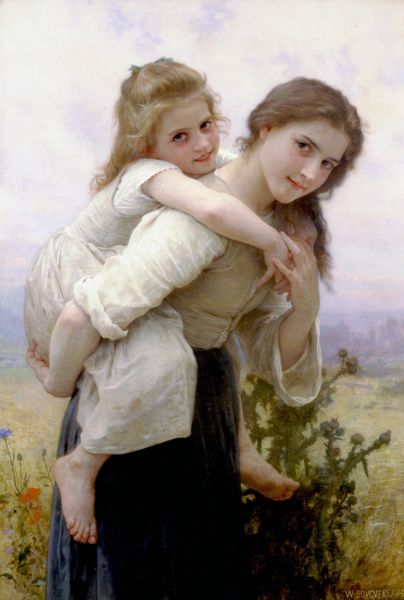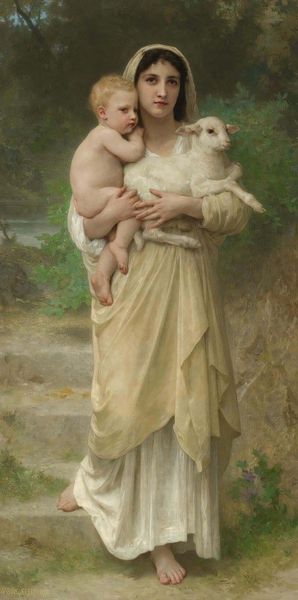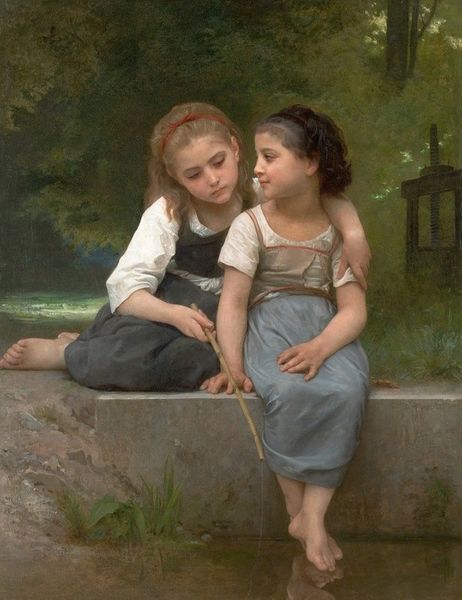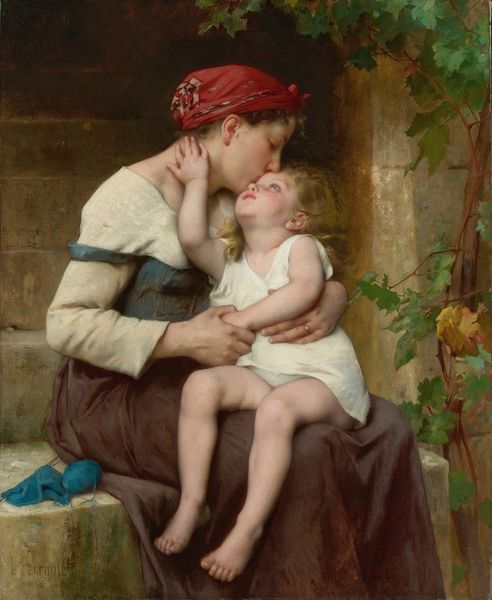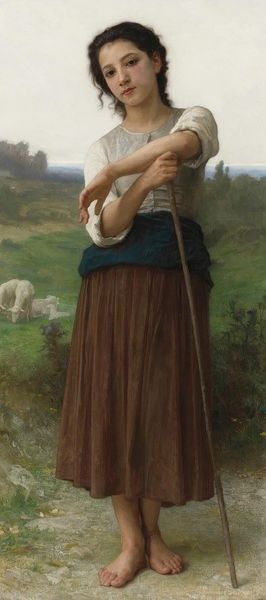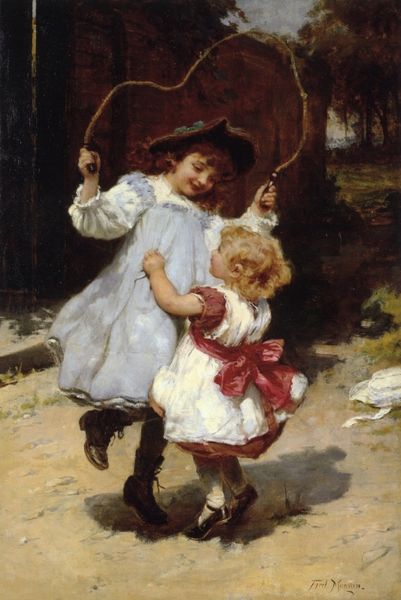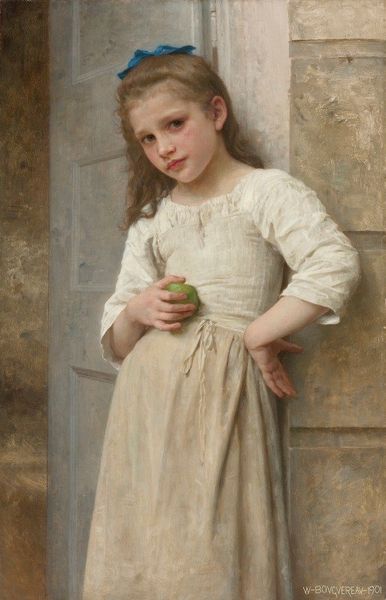
Copyright: Public Domain: Artvee
Editor: This is William Bouguereau's "À La Fontaine" from 1897, an oil painting depicting two young girls near a well. It’s a rather sentimental scene; the way the light catches the folds of their dresses is really quite lovely. What do you notice first about the work? Curator: I am drawn to the materiality and process here. Oil paint allows Bouguereau to achieve that incredible luminosity, yes, but it's also an industrial product. It wasn’t sourced locally. Where did the pigments come from? What was the division of labor within his studio? Were assistants involved in preparing the canvases or mixing the paints? These factors underpinned Bouguereau’s ability to produce such seemingly effortless images. Editor: That’s interesting! I was so focused on the final product. Do you think the choice of the subject matter, these girls drawing water, connects to the material analysis at all? Curator: Absolutely. Water was both a necessity and a source of labor. Who had access to clean water, and who had to work for it? The girls' bare feet suggest a specific social class. Bouguereau is not simply presenting an idyllic scene; he's framing a narrative about the lives and labor of these children, even if that framing is romanticized. What impact would the materials needed have had in the creation? The well, the jar and the paintings, all objects fabricated in an historical and social environment. Editor: I see! I was just taking the "realism" at face value, but it's all very constructed. Thanks for your insights. Curator: And thank you for prompting me to think more deeply about the underlying economic and material conditions represented here. It shifts my perspective, too.
Comments
No comments
Be the first to comment and join the conversation on the ultimate creative platform.
